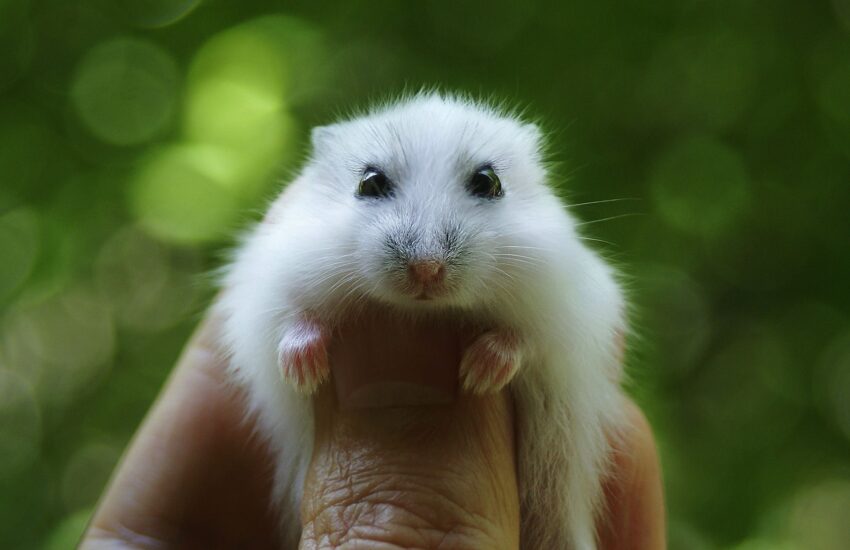“`html
Best Habitats for Different Hamster Types
Finding the right habitat for your hamster is crucial to its health and well-being. Different types of hamsters, such as Syrian, Dwarf, and Roborovski hamsters, have unique needs. In this article, we will explore the best habitats for each type, ensuring your furry friend has a comfortable and stimulating home.
Understanding Hamster Habitats
Hamsters are small, burrowing animals, and their habitats should reflect their natural instincts. A suitable habitat will not only provide enough space for the hamster to run and play but also offer enrichment to keep them mentally stimulated. The type of hamster you have will significantly influence the kind of habitat they need. Let’s dive deeper into the specific requirements of different hamster species.
Syrian Hamsters: Luxurious Living Space
Syrian hamsters, the largest of the common pet hamsters, require ample space in their habitats. A minimum of 36 inches long by 18 inches wide is ideal, as they need enough room to exercise and explore. An ideal habitat setup includes multiple levels and hiding spots for them to explore. You can enhance their living space with tunnels, chew toys, and a wheel that’s at least 12 inches in diameter.

Dwarf Hamsters: Compact and Cozy Habitats
Dwarf hamsters, including Campbell’s and Winter White, are smaller in size, requiring a habitat that is still spacious but can accommodate their need for cozy hiding places. A 24 x 12-inch cage is usually adequate. These hamsters benefit from wire cages or glass aquariums with proper ventilation. Providing them with tunnels and nesting materials like shredded paper will help them feel secure.
Roborovski Hamsters: Active and Enriching Environments
Roborovski hamsters are very active and playful, making it essential to provide a habitat that encourages their natural behaviors. While they are small, they thrive in larger cages that allow for plenty of climbing and burrowing. A habitat with lots of accessories—like wheels, ladders, and tubes—offers them the stimulation they crave. Aim for a cage size of 30 inches long by 15 inches high to ensure they have room to run.
Choosing the Right Materials for Habitats
The materials you choose for your hamster’s habitat can influence their health and comfort. Consider using chew-proof, non-toxic materials to safeguard your hamster’s well-being. Common materials include metal wire, glass, and high-quality plastic. Avoid cages that have sharp edges or painted surfaces, as these can pose a risk to delicate hamster skin.
Enrichment Items: A Must for All Hamsters
Regardless of the hamster type, adding enrichment items to their habitat is vital. These items not only provide stimulation but also prevent boredom. Include items such as:
- Chew toys made from safe wood or untreated fruit branches
- Hiding spots, like small boxes or igloos
- Exercise wheels with a solid surface
- Tunnels and bridges for exploration
Rotating these toys frequently can keep your hamster engaged and happy, which contributes to a higher quality of life.
Setting Up a Comfortable Bedding
Bedding material is another essential consideration. Suitable options include aspen shavings, paper-based bedding, or hemp bedding. Avoid cedar and pine shavings, as their scent can irritate a hamster’s respiratory system. Ensure the bedding is thick enough for burrowing, especially for species like Syrian and Dwarf hamsters, who enjoy digging.
Maintaining Your Hamster’s Habitat
Regular maintenance of your hamster’s habitat is key to keeping your pet healthy and happy. This involves clean-up routines and making sure everything is functioning as it should. Here are some maintenance tips:
Cleaning the Habitat
At least once a week, provide a thorough cleaning to remove soiled bedding, uneaten food, and waste. Use a safe cleaning solution, like vinegar diluted with water, to wipe down surfaces. Make sure to rinse thoroughly and allow the habitat to dry completely before reintroducing your hamster.
Checking for Comfort and Safety
It’s important to check habitats regularly for safety hazards, such as broken parts or loose accessories. Ensure the water bottle is functioning correctly and check the wheel for any signs of wear. A comfortable and safe habitat supports your hamster’s health and happiness.
Conclusion
Providing the best habitat for your hamster type is crucial for their overall well-being. From choosing high-quality habitats to adding enrichment items and maintaining a clean, safe environment, each step is vital. By understanding the specific needs of your hamster, you ensure they live happily and thrive in a space that feels like home.
FAQ
1. What size cage is best for a Syrian hamster?
A minimum cage size of 36 inches long by 18 inches wide is recommended for Syrian hamsters to allow for adequate exercise and exploration.
2. Can I keep Dwarf hamsters together?
Yes, Dwarf hamsters can often live in pairs, but it is essential to monitor them to ensure they do not fight over territory. A spacious cage with plenty of separate hiding spots is necessary.
3. Is it safe for hamsters to use cedar bedding?
No, cedar bedding is not safe for hamsters. It can cause respiratory issues due to its aromatic oils. Instead, opt for aspen or paper-based bedding.
4. How can I keep my hamster entertained?
Provide various enriching items like tunnels, chew toys, and different bedding types. Regularly rotate their toys to keep the environment stimulating.
5. How often should I clean my hamster’s cage?
It’s recommended to clean your hamster’s cage once a week thoroughly, while spot cleaning should occur more frequently to keep the environment hygienic.
“`
